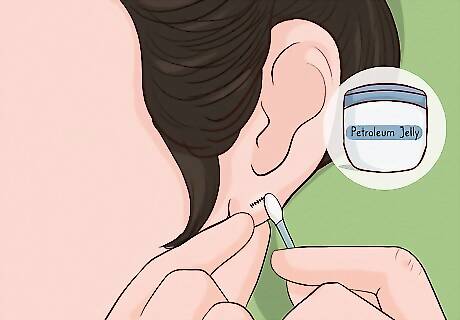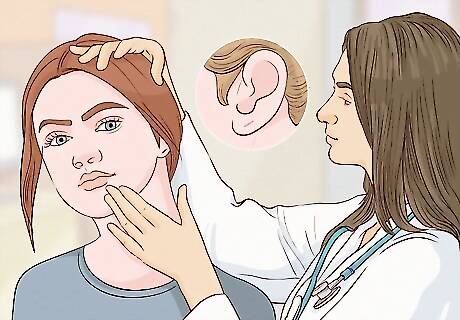
views
Basic Piercing

Stop wearing your earrings so the hole can close up. Slide, unhook, or unscrew your jewelry and remove them from your ears completely. Don’t slide any other earrings through the pierced holes, or else they won’t be able to close properly. Your earlobes may not close or shrink to their original size if you used gauges larger than 00g.

Clean the area twice a day if you’re closing a new piercing. Brand-new piercings usually heal fast and close completely, but it's important to keep the area clean since the holes are basically open wounds. Follow the aftercare instructions that your piercer gave you, or clean your piercings with a saline solution twice each day. The Association of Professional Piercers recommends that you first wash your hands with soap and warm water. Then, dip a clean piece of gauze into saline solution and dab it over the piercing. Pat the piercing dry with a paper towel. To be safe, clean your piercing twice a day for about 6 weeks.

Monitor the piercing over the next few hours, days, and weeks. Generally, brand-new piercings close up within a few hours. If you've had the piercings for less than a year, give them a few days or weeks to close up. Piercings that are more than a year old may never close up completely. However, the holes will probably shrink down and become nearly invisible to the naked eye. Some piercing professionals have seen decades-old piercings seal over a couple days. It really depends on the person!

Leave your earrings in for now if the piercings are infected. Mix ½ tsp (3 g) of salt in 1 cup (0.24 L) of water and soak the area with a damp cotton ball. Then, blot your earlobe dry and treat it with antibiotic ointment. Talk to your piercer about when you can remove the jewelry and close the hole. If you remove the jewelry, you can potentially seal the infection into the piercing, which can lead to an abscess.
Large or Ripped Holes

Visit a cosmetic surgeon to get large or ripped holes stitched closed. Tears in your earlobes may seem pretty scary, but they’re easy to fix. Call up a cosmetic surgeon and ask if they can stitch your earlobes back together. Generally, this type of surgery only takes about 15-20 minutes for each earlobe. During this procedure, your surgeon will clean out your earlobes with an antiseptic and use a local anesthesia to make the actual surgery painless. Then, they’ll use sutures to repair the damaged skin.

Wash your stitches 3 times a day with gentle soap and warm water. Clean off your earlobes throughout the day with a cotton swab so they don’t get infected. Keep cleaning out your stitches for the first week after the procedure.

Spread petroleum jelly over the wound once a day for 1 week. Rub a tiny amount of petroleum jelly over your stitches—this will keep your ears moist, which helps promote healing. Place a clean bandage over the petroleum jelly to lock the moisture in place. If the skin gets too dry, it’s more likely to scab and scar. Call your surgeon if you have any complications during the healing process.

Get your stitches removed by your doctor after 1-2 weeks. Return to the cosmetic surgeon after the suggested healing period passes. This might be 1-2 weeks, depending on how fast your earlobes heal. Don’t wear any earrings or get any new piercings for at least 2 months after your procedure. Elayne Angel Elayne Angel, Piercing Consultant Allowing an earlobe piercing to close simply requires patience and proper aftercare. Remove the earring and keep the area clean while showering. Apply an antibiotic ointment 2-3 times daily to promote healing and reduce scarring. Avoid re-piercing the area for several months as the fistula seals. Massaging daily with vitamin E oil can help break up scar tissue and improve aesthetic results.




















Comments
0 comment